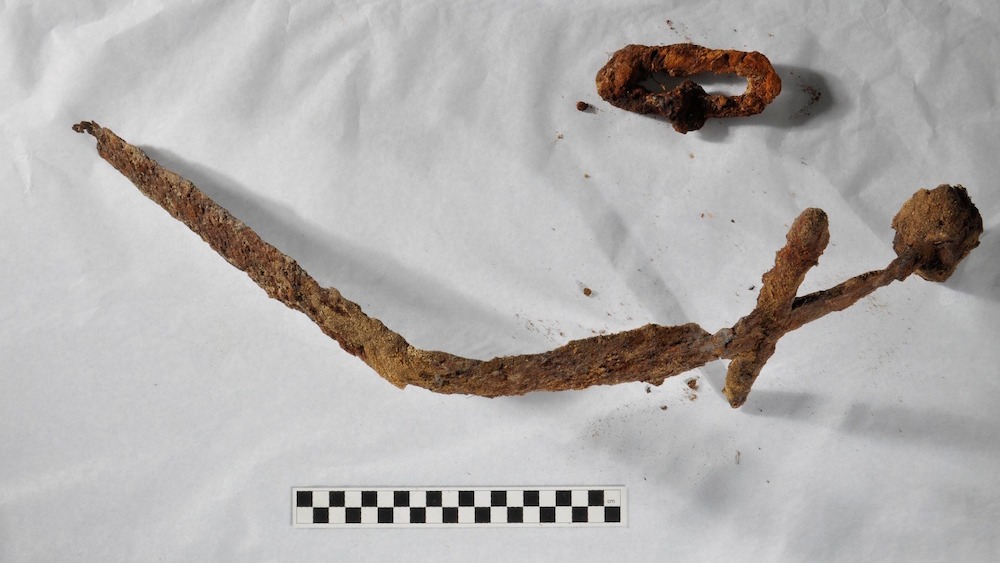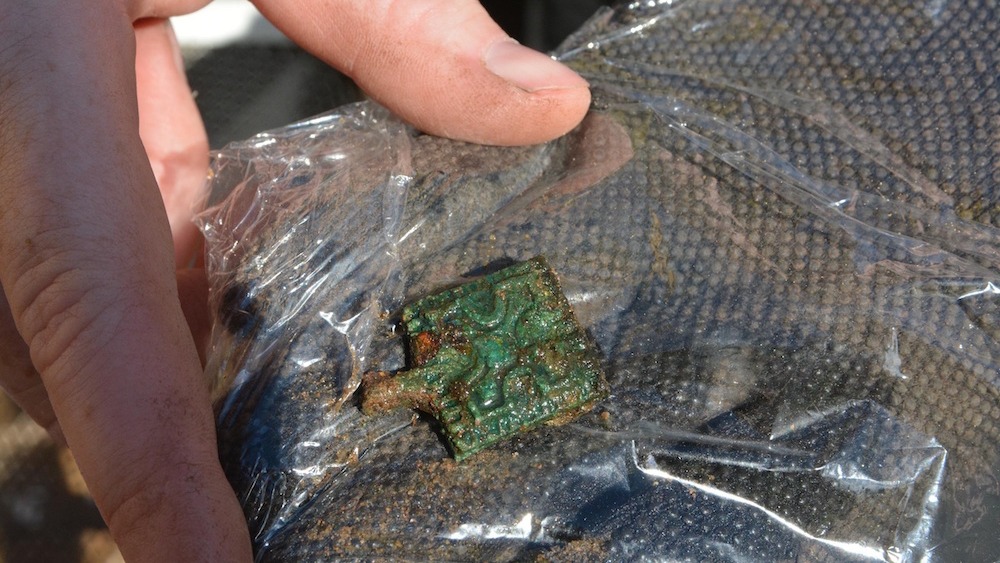Man digs up 1,000-year-old sword from Swedish Crusades in his yard in Finland
In addition to finding a Crusader sword, archaeologists in Finland have discovered a cemetery that could potentially contain hundreds of graves.

While conducting maintenance work on his land, a man in southern Finland discovered a piece of iron sticking out of a mound of dirt. What he pulled out, however, wasn't scrap metal but a centuries-old sword.
The unnamed landowner immediately contacted local archaeologists about the partially bent weapon, which had a straight cross guard outfitted with a three-sided, oval pommel similar to what a Swedish Crusader would've carried into battle. Researchers radiocarbon-dated the artifact to between A.D. 1050 and 1150, according to a statement.
The Swedish Crusades were a series of religious-fueled raids that unfolded between the 12th and 13th centuries. The aim of the raids, initiated by the Roman Catholic Church and the Swedish Crown, was to gain control of what is now Finland, according to an article in Yleisradio Oy, the Finnish Broadcasting Co. These wars were cast as "Crusades" by 19th-century romantic nationalists, and it's likely that the first of the three crusades was mythical and didn't actually happen, according to All Things Nordic.
An X-ray of the sword's blade revealed that it contained an inscription, which archaeologists think reads "in the name of Jesus Christ," Juha Ruohonen, an archaeologist and instructor in the Department of Archaeology and Finnish History at the University of Turku in Finland who led the excavation, told Live Science in an email.
Related: Crusader sword found in Holy Land was bent, possibly in naval battle, X-rays reveal
As researchers continued surveying the area, they came upon a second discovery: an "unknown" cemetery located in the same vicinity as a medieval stone church, according to the statement. This marks the first time a burial ground has been found from this time period in Finland's Salo region.
"The location of the site, in the immediate vicinity of a medieval stone church, can be considered as evidence of a much earlier church organization in the area than previously believed," Ruohonen said in the statement. "It has been thought that Pertteli parish was established with the founding of the Uskela chapel in the 15th century."
Get the world’s most fascinating discoveries delivered straight to your inbox.
During the excavation, archaeologists unearthed a number of artifacts that are thought to be part of a single burial: parts from a different sword, wood fragments from a coffin, cross-shaped pendants and a leather belt decorated with 30 bronze ornaments containing rosette patterns.
"The whole belt also included a buckle, several end tips, animal-head decorations and strap dividers," Ruohonen said in the statement. "The leather parts of the belt are partially preserved. In addition, the bronze ornaments still show plenty of fragments of attached fabric, remnants of the clothing of the deceased."
They also found human bones at the burial site.
"Radiocarbon dating is on the way for the bone[s] of the deceased," Ruohonen told Live Science. "But the result will not be available until January."
So far, archaeologists have uncovered eight graves at the site, but they think there could be anywhere from a dozen to 200 burials in total, according to the statement.
Jennifer Nalewicki is former Live Science staff writer and Salt Lake City-based journalist whose work has been featured in The New York Times, Smithsonian Magazine, Scientific American, Popular Mechanics and more. She covers several science topics from planet Earth to paleontology and archaeology to health and culture. Prior to freelancing, Jennifer held an Editor role at Time Inc. Jennifer has a bachelor's degree in Journalism from The University of Texas at Austin.



